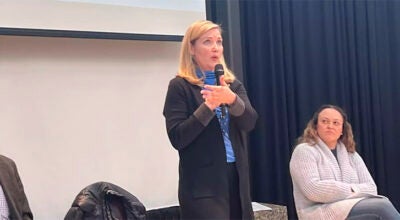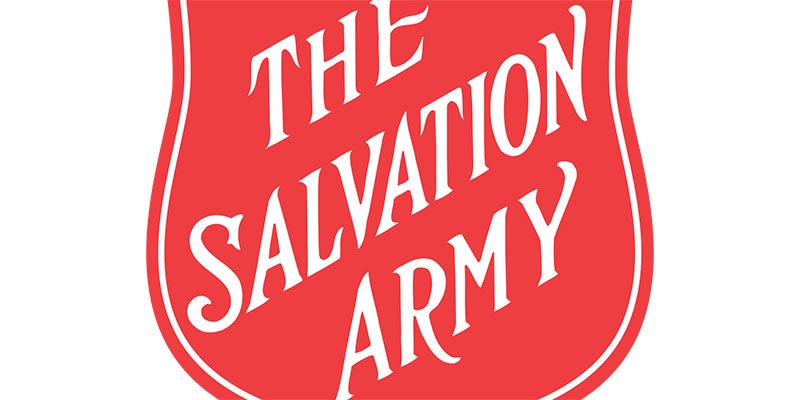Lunch programs help families, school
Published 6:56 pm Friday, July 22, 2022
|
Getting your Trinity Audio player ready...
|
With another school year getting ever closer, Austin Public Schools is pushing for those families who haven’t signed up for free and reduced lunches to do so.
Not only does free and reduced lunches help families, it also generates revenue for the school through the National School Lunch Program in the form of compensatory revenue.
However, it’s taken on more importance because the waivers schools enjoyed throughout the brunt of the pandemic, which provided free lunches for all students, have expired.
Through free and reducd, Austin can raise upwards of $5,000, however, Andrew Beenken-Adams, executive director of finance and operations for Austin Public Schools, said reaching that $5,000 limit is rare and usually generates closer to $2,800 to $3,000.
Still, during the pandemic, the school felt the hole left by that lack of revenue to the school’s food budget.
“That’s about $5 to $5.5 million of our budget, but during the free meal period we actually lost a million and a half of that,” Beenken-Adams said. “We were down to $4 million. Last year, Mary (Weikum’s) team did such a phenomenal job working with families to get those forms back that we got back to just about $5 million.”
However, the pandemic also created another numbers challenge for the school. With all meals free, it took away from the school’s ability to know just who qualified for free and reduced lunches.
“Sometimes, kids who qualify for free and reduced lunch during the pandemic is not a true representation because people didn’t fill out the forms because they were getting the free meals without that,” said Weikum, the district’s director of Food and Nutrition.”
In order to get families back on the program, Weikum said her office called every family in the district at least once to make them aware of the program and to help them sign up.
Another reason to get back on the program is pandemic EBT money that was available during the pandemic has expired.
“We tried really hard to make sure they knew, but I think a lot of the time it’s human nature,” Weikum said. “If I don’t have to fill out a form to get the reward, I’m not going to spend the time doing it. The reward was already given without the applications being turned in.”
Funds like these are important, because it represents a sustainable revenue stream for the food budget of the district. It allows them flexibility in being able to ensure funds are allocated to fresh fruits and vegetables.
Not that the effects of the pandemic aren’t still being felt. The district is still being pinched by supply chain issues and high costs.
“We’re using sporks a lot because we can’t find forks or spoons,” Weikum said. “Our gloves that the food service staff uses, probably increased by 200%. We’re just trying to manage needs.”
“The worst thing for me is having to go to the general fund and say we don’t have enough money,” she continued, highlighting a fear that with good management the district has been able to avoid. “That money is for students, it’s not for food service. We’re just trying to ensure that each year, losses are minimal.”
The district is hoping it can also increase meal counts, which serves as a barometer for revenue. During the heart of the pandemic, to help decrease the number of students in lunchrooms, the high school allowed not only seniors, but juniors as well to leave the campus for meals.
“That’s 300 students where a percentage of them are going elsewhere for lunch so that’s affected meal counts,” Weikum said. “Our revenue is our meal counts so when our meal counts are down, our revenue is down. We need to entice these kids back on a regular basis.”
One program that can help with that is the Lunch Tray Project, instituted by the district in the 2018-19 school year.
Funded solely by donations, the Lunch Tray Project is another plan that helps reach families who may not have qualified for free and reduced lunches, but are close.
Weikum said that she remembered a family missing out on free and reduced by just $11. While the families may not need free housing or help like that, a helping hand for food can still go a long way.
“They just need a leg up,” Weikum said. “This is something we try to take off their plate and we feel that has a huge impact.”
The amount of money dispersed on a case by case basis depends on each family and can be as high as $450 a student.
At the end of the year, money in the account that isn’t used is taken out and put back into the Lunch Tray Project to ensure it remains a sustainable program.
“One hundred percent of the proceeds goes to the kids here in Austin,” Beenken-Adams said.
The Lunch Tray Project also allayed some fears within the district when it became apparent that free lunch for all students would eventually be going away.
“Our fear and big conversation when we finally got word from the fed was that they weren’t going to allow us to operate that program anymore; our fear was that we were going to miss those families that make $11 more than the threshold,” Beenken-Adams said. “How can I afford to pay $450 for lunch this year when the person making $12 less than me can’t. That’s the true intent of this program. We have a community of folks that fall into that thin line that barely miss that.”
To sign up for Free and Reduced Lunches and the Lunch Tray Project, visit: https://www.austin.k12.mn.us/district-offices/food-and-nutrition






